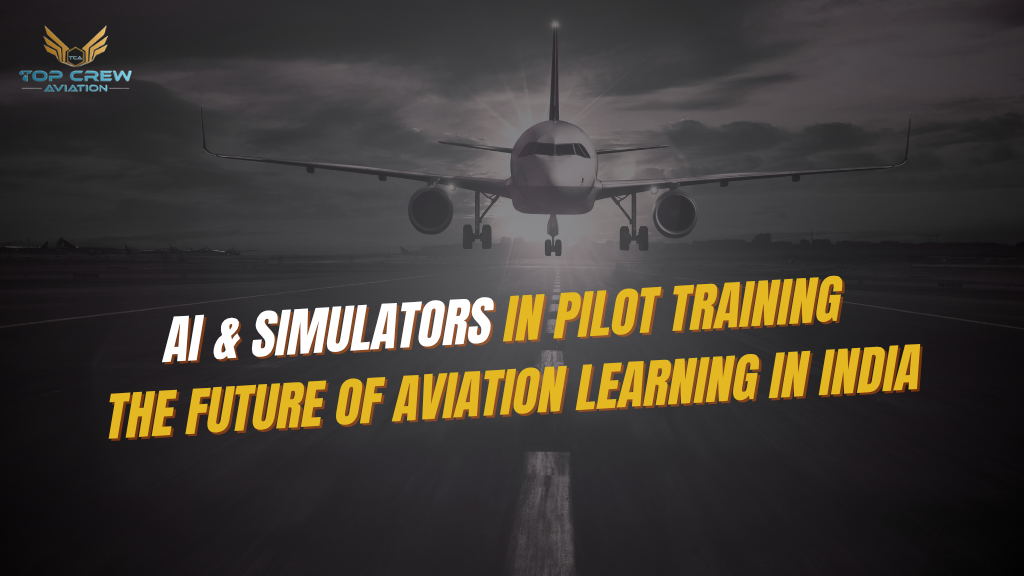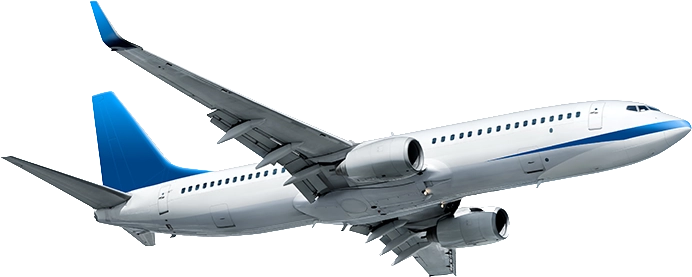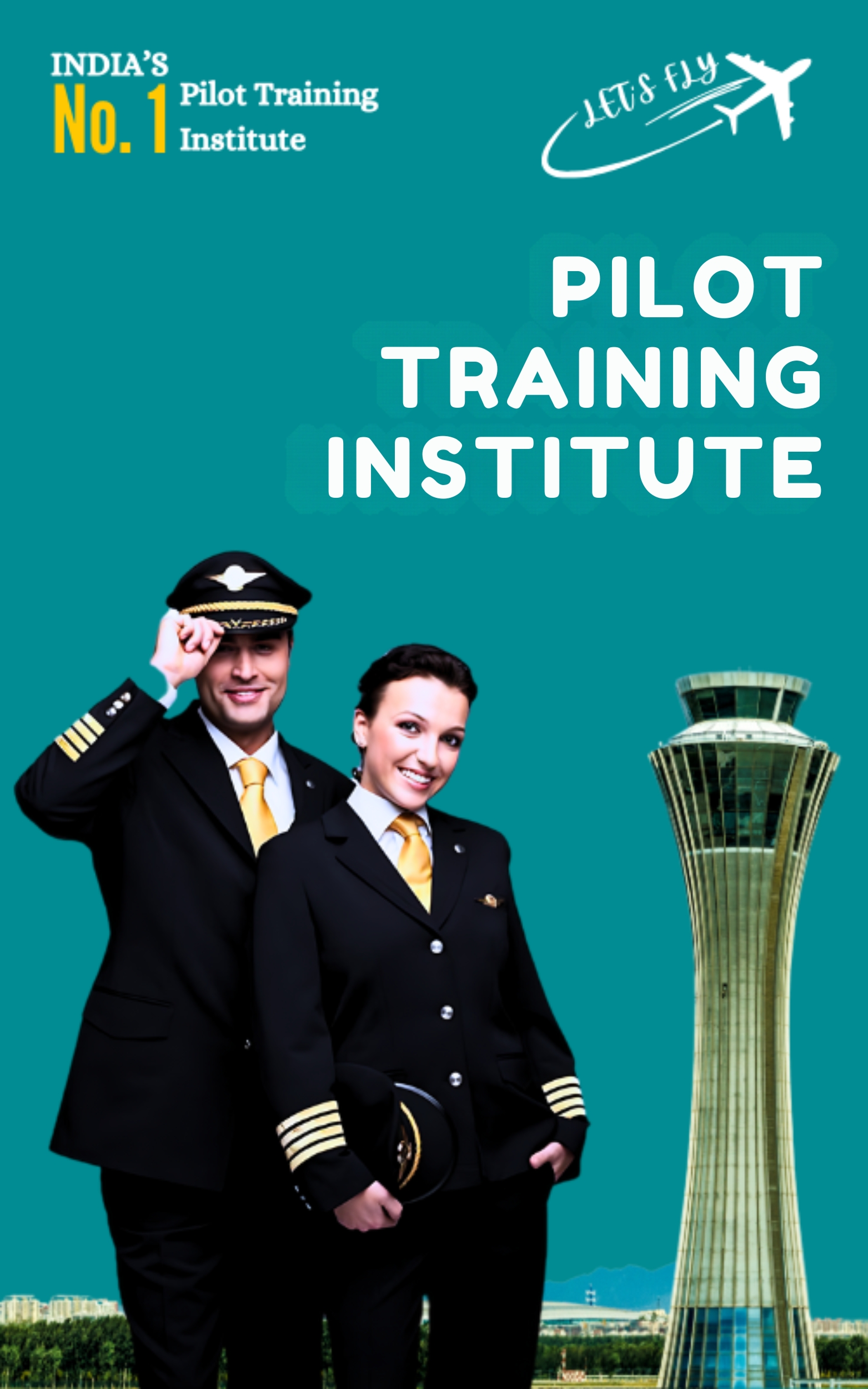AI & Simulators in Pilot Training – The Future of Aviation Learning in India
Traditional cockpit interiors were pure metal, dials, and pilot instincts; however, today they would be complex human-machine ecosystems where software, sensors, and simulation downscale real-world phenomena that were previously realizable only within the aircraft. In India – being a fast-growth aviation market that witnesses increasing flight schools, airline fleets, and aspirational cadets – simulators are already vital for training, and AI is now emerging to make learning safer, cheaper, and more personalised.
These days, talk to anybody about what’s coming next for learning to fly in India. They will mention AI and simulators almost every time. These tools are really shaking up how pilots get trained over there.
Why AI and Simulators Matter in Pilot Training
Traditional pilot training relies heavily on classroom theory, flight hours in real aircraft, and repetition. While nothing can completely replace the feel of flying an aircraft, simulators already play a central role in pilot education worldwide. Simulators let trainees practise emergency procedures, instrument approaches, and complex airspace scenarios with zero risk to life or equipment. AI elevates this by adding adaptive instruction, predictive analytics, and realistic, data-driven scenario generation. For example AI takes this to the next level. Instead of just repeating exercises, AI in pilot training adapts to each student. It checks their weak points, gives instant feedback, and creates realistic situations like weather changes, emergency landings, or engine failures.
This means better learning, more confidence, and less wastage of time and money. While not yet fully formalised under DGCA rules, it shows great potential for the near future.
Key Benefits of AI & Simulators for Indian Aviation
- Safe environment for practice: Simulators let student pilots practise dangerous situations like engine failures, crosswind landings, or bird strikes without any risk. This builds real-world confidence.
- Lower pilot training cost in India: Flying hours in real aircraft are very costly. Simulators reduce cost by minimising unnecessary aircraft time, but live flying hours remain mandatory under DGCA rules.
- Standardised training: Every student gets the same experience inside a simulator. AI tracks performance and ensures equal training standards across India.
- Personalised learning: AI finds the student’s weak spots — maybe crosswind landings, radio communication, or navigation errors — and makes them practise until they improve.
- More efficient instructors: With AI handling performance analysis, flight instructors can spend more time mentoring students and teaching soft skills like decision-making and leadership.
- Prepares pilots for modern cockpits: Today’s aircraft are highly automated. Glass cockpit simulators in India give students early exposure to real airline systems, making the transition from student pilot to airline pilot much smoother.
Read Also – Aviation Jobs in India: A Complete Career Guide
Types of Flight Simulators in India
- Basic Part-Task Trainers (PTT): These help cadets practise specific tasks like using instruments or radio communication. AI creates small drills to sharpen skills.
- Full Flight Simulators (FFS): These are the most advanced, with moving platforms and 360° visuals. They can replicate aircraft like the Airbus A320 or Boeing 737 perfectly. DGCA only approves FFS for type ratings, not for initial CPL flying hours.
- VR Simulators & Desktop Trainers: Affordable, portable, and popular for beginners. AI combined with VR gives immersive cockpit training even before stepping into a real aircraft. VR simulators are helpful for early familiarisation but are not officially counted toward licensing hours in India.
With these simulators, Indian students can get airline-level training at a fraction of the cost.
Challenges for AI & Simulators in India
Yet, while the future appears bright, there are still a few hurdles between India and AI-aided simulators for pilot training:
- High most: Experts says full flight simulators are also expensive to buy. They’re priced beyond the means of many small flying schools.
- Rules: The DGCA needs to decide how many simulator hours may replace actual flying hours.
- Instructors training: Teachers should be trained to use AI data and analytics effectively.
- Accessibility -Most of the advanced simulators are in metro-cities like Hyderabad, Bengaluru, Mumbai and Delhi. And access remains limited in smaller cities.
- Data & privacy issues: AI systems collect performance data, so schools must ensure safety and transparency of student data.
Solutions for India
To get past these issues, a few things could help out. Shared simulator centers in different regions would let a bunch of schools use just one fancy setup. That way, everyone shares the cost.
- Then there are cheaper VR simulators, you know, for the starting phases of training. They could make it easier to get into without breaking the bank.
- The government and DGCA need to step up too. Approving those AI training modules would push things forward.
- Instructors should get some special sessions on how to handle AI dashboards. It would make the switch smoother for them.
- Public-private deals could spread simulator training all over India. Basically, teaming up to make it reachable everywhere.
Why AI won’t take over from human instructors
One big thing to remember is that AI and simulators just can’t replace real people in the cockpit. Flying isn’t only about hitting buttons. It’s judgment calls, building confidence, and quick decisions under pressure. AI handles guiding and checking data fine. But only seasoned instructors teach that human touch in flying.



